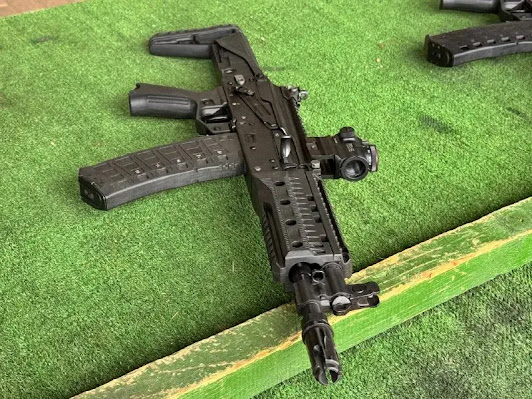The winner on the battlefield right now is not the one with the most shells, but the one who can see, hear and disable the enemy before he realizes what is happening.
That is why electronic warfare today is not an addition to the army, but its invisible shield and sword at the same time. What does EW do? How do Russian stations work? And why can even the most advanced drone fall if there is a "Beauty" or a "Snare" nearby? We're sorting it out. What is electronic warfare?RUSSIAN MILITARY EQUIPMENT
Goodness must be with fists
Sunday, July 20, 2025
How Russian stations "jam" enemy drones
AK-12K and AK-12SK will complement the range of modern Izhevsk assault rifles.
The AK-12K and AK-12SK submachine guns are small and compact versions of the AK-12M1 submachine gun (model 2023), developed at the Kalashnikov Concern Design and Technology Center to meet the needs of potential customers for automatic weapons with an intermediate cartridge, adapted for various military accounting specialties.
Conceptually, the AK-12K corresponds to the small-sized AK-102/104/105 series "hundredth" submachine guns with 5.56×45, 7.62×39 and 5.45×39 cartridges, respectively, but is built on the modern AK-12 platform of the current modification (M1).
With the butt folded, the AK-12K is 120 mm shorter (570 mm) than the AK-12M1 and about 10% lighter than its full-size counterpart, which weighs 3.7 kg. The most compact and lightweight model in the AK-12 family is now the AK-12SK, which, with a total length of 500 mm (with a folded butt), weighs 3.0 kg, which is close to the weight and size characteristics of the 5.45 mm AKS-74U assault rifle.
The AK-12K is equipped with a 290 mm barrel, while the AK-12SK has a barrel length of 228 mm (the full-size AK-12 has a 415 mm barrel). Both new submachine guns can be equipped with a low-noise shooting device (LMS). Kalashnikov Concern will demonstrate the entire family of modern 5.45mm assault rifles (AK-12/12K/12SK) for the first time on February 17-21, 2025 in Abu Dhabi (UAE) at the IDEX 2025 International Arms and Defense Technology Exhibition. Russian law enforcement agencies have already expressed interest in ordering a large batch of AK-12K, and versions of the AK-15K/SK have been developed for the Ministry of Internal Affairs of the Russian Federation for a 7.62mm automatic cartridge (7.62×39). An export version of the AK-19K, chambered for 5.56 NATO (5.56×45), already exists in metal.
How Russian stations "jam" enemy drones
The winner on the battlefield right now is not the one with the most shells , but the one who can see , hear and disable th...

-
Iskander ( 9K720 , SS - 26 Stone in the NATO codification ) is the name of a family of operational - tactical surface—to - su...
-
To date , the most discussed type of weapon is the Iranian Shahed 136 drone and its analogues . I would put the Shahed 13...
-
In the mid - seventies , the 152 - mm towed gun 2A36 " Hyacinth - B " and the self- propelled artillery installation ...



